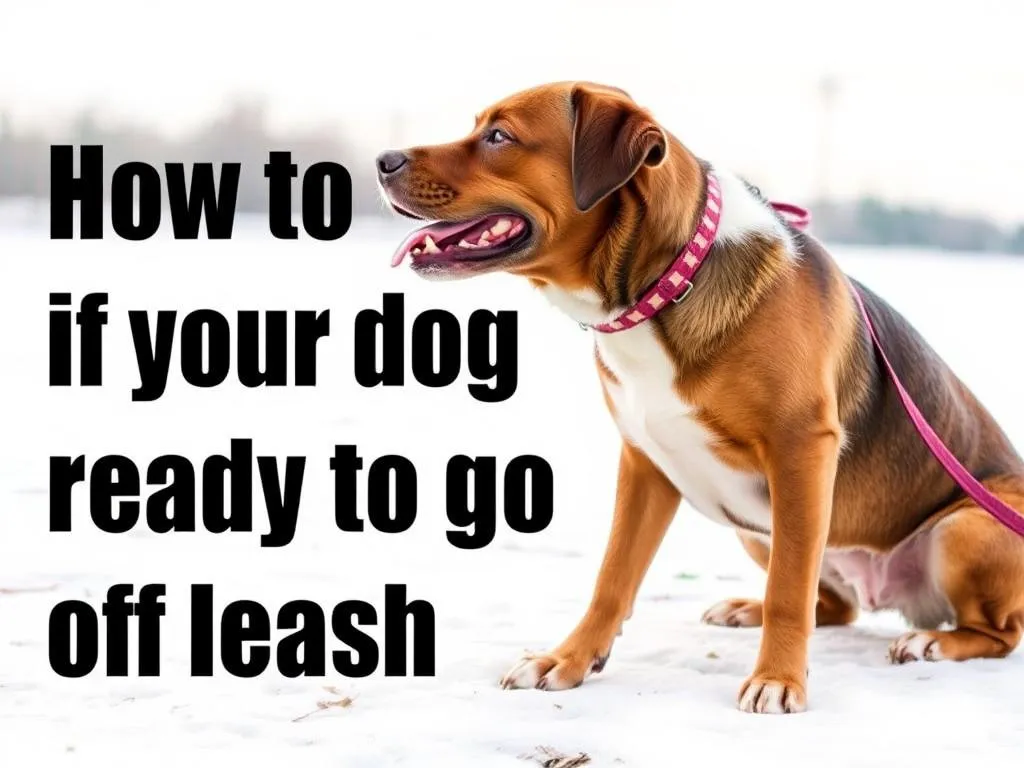
Off-leash training can transform the relationship between you and your dog, opening up a world of freedom and exploration. However, not every dog is ready to take that leap into off-leash adventures. Understanding when and how to transition your dog from on-leash to off-leash activities is crucial for both safety and enjoyment. This guide will help you determine how to know if your dog is ready to go off-leash while providing insights into training and safety.
Understanding Off-Leash Training
What is Off-Leash Training?
Off-leash training is a specialized form of training that focuses on teaching dogs to respond to commands without the constraint of a leash. The primary purpose is to allow dogs the freedom to explore their environment while still maintaining their owner’s control. Unlike on-leash training, which can create limitations, off-leash training encourages dogs to engage in natural behaviors, fostering independence and confidence.
The Importance of Off-Leash Training
Off-leash training promotes natural behaviors and instincts, allowing dogs to express themselves in ways they might not be able to while leashed. It enhances their physical activity through running and playing, which is essential for their overall health. Moreover, it provides mental engagement, as dogs are required to navigate and respond to their surroundings without direct guidance. This training also strengthens the bond between you and your dog, as it fosters trust and communication.
Assessing Your Dog’s Readiness
Age and Development
Determining how to know if your dog is ready to go off-leash starts with assessing their age and development. Generally, dogs around six months of age can begin basic off-leash training. However, it’s essential to consider their maturity; younger dogs may lack the impulse control and focus necessary for successful off-leash experiences.
Basic Obedience Training
Before venturing into off-leash activities, your dog should have a solid foundation in basic obedience training. Key commands such as sit, stay, and come are crucial. Consistency in training is vital; ensure that your dog responds reliably to these commands in various situations before considering off-leash time.
Temperament and Personality
Your dog’s temperament plays a significant role in their readiness for off-leash activities. Assess your dog’s confidence and fearfulness. A dog that is overly anxious or fearful may not be suited for off-leash environments, where distractions are plentiful. Additionally, consider the breed—some breeds are more independent and may handle off-leash situations better than others.
Socialization Skills
A well-socialized dog is more likely to thrive in off-leash environments. Evaluate your dog’s comfort level around other dogs and people. Signs of good social behavior include calmness during interactions, appropriate play styles, and the ability to disengage when needed. Dogs that exhibit fear or aggression should be further socialized before going off-leash.
Environmental Considerations
Safe Locations for Off-Leash Activities
Selecting the right location for off-leash activities is crucial. Look for fenced parks or quiet trails that provide a secure environment for your dog to explore. Avoid busy streets or hazardous locations, as unpredictable elements can lead to dangerous situations. Familiarize your dog with the area before allowing them to roam freely.
Weather and Seasonal Factors
Weather can significantly impact your dog’s ability to go off-leash. Hot weather can lead to overheating, while icy conditions may cause slips and injuries. Always consider the season and adjust your plans accordingly. In summer, early morning or late evening outings are ideal, while winter walks should be shorter and more controlled.
Testing Your Dog’s Readiness
Controlled Off-Leash Trials
Conducting controlled off-leash trials is an effective way to gauge your dog’s readiness. Start in a secure area with minimal distractions. Release your dog on a long line to give them a sense of freedom while still maintaining control. Observe how they respond to commands and how well they stay focused on you. If your dog consistently responds positively, they may be ready for full off-leash adventures.
Monitoring Behavior
During this testing phase, closely monitor your dog’s behavior. Pay attention to their reactions to distractions such as other animals, people, or noises. Consistent recall is critical; if your dog struggles to return when called, it may indicate they are not yet ready for off-leash freedom.
Establishing a Reliable Recall
Training Techniques for Recall
Teaching a reliable recall is one of the most important aspects of off-leash training. Various techniques can help establish this essential skill. Positive reinforcement, where you reward your dog for coming when called, is highly effective. Clicker training is another method that can help your dog associate the sound of the clicker with positive outcomes, reinforcing their recall abilities.
Creating a Strong Bond
To foster a successful off-leash experience, building a strong bond with your dog is crucial. Engage in activities that promote trust, such as regular playtime, training sessions, and positive interactions. The more secure your dog feels in your relationship, the more likely they are to respond positively when off-leash.
Safety Measures for Off-Leash Adventures
Essential Gear
Even experienced owners should equip their dogs with the right gear for off-leash outings. Consider using GPS collars or harnesses that provide both comfort and security. Identification tags and microchipping are also essential in case your dog gets lost during an adventure. Always ensure your dog is easily identifiable to minimize the risk of separation.
Emergency Preparedness
Prepare for emergencies by having a clear plan in place. Know what to do if your dog goes missing or suffers an injury. Familiarize yourself with local wildlife and hazards in your area, as certain environments may pose unique risks to off-leash dogs. Being prepared can make all the difference in ensuring a safe and enjoyable outing.
Transitioning to Off-Leash Freedom
Gradual Progression
Transitioning your dog to off-leash freedom should be a gradual process. Start by allowing short periods of off-leash time in a secure environment and slowly increase the duration as your dog demonstrates reliability. Monitor their behavior throughout this process; if they seem distracted or unresponsive, it may be necessary to scale back and reinforce training.
Ongoing Training and Reinforcement
Even after your dog has successfully transitioned to off-leash activities, ongoing training and reinforcement are essential. Regular practice in various environments will help maintain their skills. Continue to socialize your dog and introduce new challenges to keep them engaged and responsive.
Conclusion
Understanding how to know if your dog is ready to go off-leash involves a multifaceted approach, considering age, training, temperament, and environmental factors. By assessing your dog’s readiness, establishing a reliable recall, and prioritizing safety, you can enjoy the many benefits of off-leash freedom. Take the time to invest in your dog’s training and nurture your bond, and both you and your canine companion will reap the rewards of this enriching experience.









